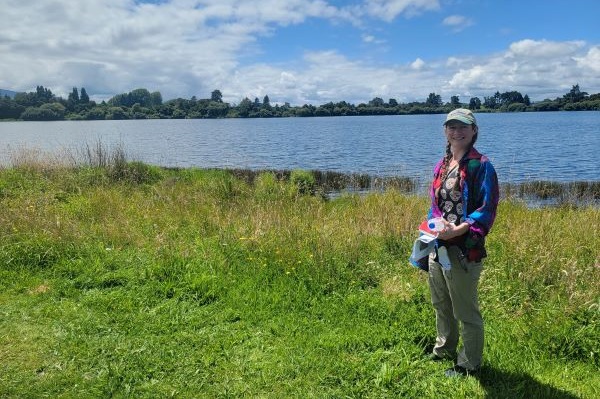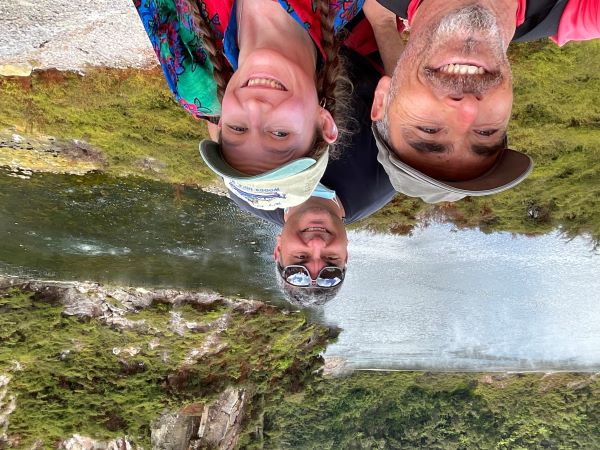Montana Tech professor works with group of international scientists on proposal for scientific drilling into New Zealand volcanic area

A professor at Montana Technological University is among more than two dozen international scientists who are drafting a proposal to drill into a New Zealand volcanic area in an effort to learn more about the volcanology, seismology, chemical, geological, and biological makeup of volcanoes around the world.
Associate Professor of Environmental Chemistry Dr. Alysia Cox is a co-author of the paper “CALDERA: a scientific drilling concept to unravel Connections Among Life, geo-Dynamics and Eruptions in a Rifting Arc caldera, Okataina Volcanic Centre, Aotearoa New Zealand” published in the peer-reviewed journal Scientific Drilling.

Cox’s involvement began in January 2023, when she traveled to Tauranga, Waikato University Campus in Aoetearoa New Zealand for a conference to discuss the possibility of drilling into the Okataina Volcanic Centre. Cox delivered a presentation, “Biosphere: Global Knowledge Gaps in Rift/Caldera Settings that could be Addressed by Drilling.”
Cox has been researching the biogeochemistry of Yellowstone National Park’s volcanic features since 2003. Her team collects samples from mudpots and hot springs to better understand how the chemical composition of the rock and the fluid of the features impacts the subsurface microbial diversity, function and activity.
“At the workshop we had lots of interdisciplinary scientists from all over the world, from New Zealand, Montana, Italy, England, Iceland, India, China, from all over the place,” Cox said. “We also worked in conjunction with the local Maori people, who are collaborating with the scientists. It is a very integrated project with the Maori Indigenous Knowledge System (matauranga), which is important.”
The team concluded that it would be beneficial to drill two boreholes. The shallow borehole would be less than 200 meters deep and would focus on collecting specimens informing the scientists about the biosphere and groundwater. The deep borehole would be between 1,000 and 1,500 meters deep, and would inform the scientists about volcanic stratigraphy, tectonics, hydrology, and physical rock properties. Both boreholes could give insight into the geophysical hazards associated with volcanic areas.
“This site is really interesting because of the geology of the area,” Cox said. “One of the most exciting points is the three different compositions of igneous rock present. There are andesites, basalts, and rhyolites. Whereas, most systems you have predominantly one type or bimodal volcanism with rhyolites and basalts. When you have a rock and you have water reacting through it, you end up with different trace elements and different nutrients in the water, and then different organisms live in the water ultimately based on the original rock composition.”
Careful consideration was given as to how deep the proposed boreholes would be, and their ideal location to gather data that would be valuable to the scientists across the multiple disciplines. Scientists also want to avoid sites that are culturally important to the Maori people.
The next step is for the authors of the paper to write an official proposal for drilling to try to find funding for the project. Cox has been offered a principle investigator position for the next stage of the project.
Cox also got to explore New Zealand on the trip, which took place during a sabbatical. She took her three-year-old son and sister along. Though the 14-hour plane ride was long for the toddler, the family had a good time, and got to explore, including Hobbiton, a filming location for the Lord of the Rings series.
To read the paper, click here.